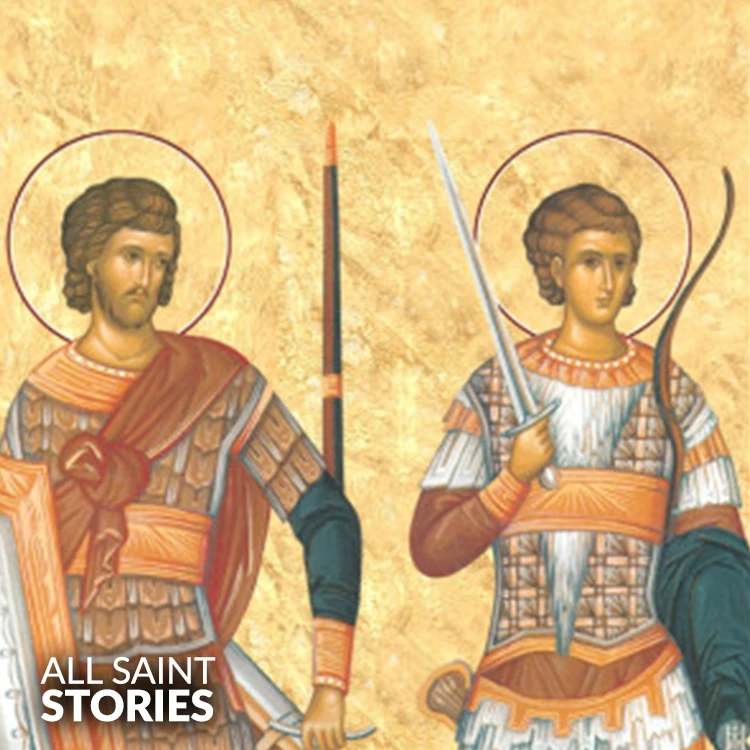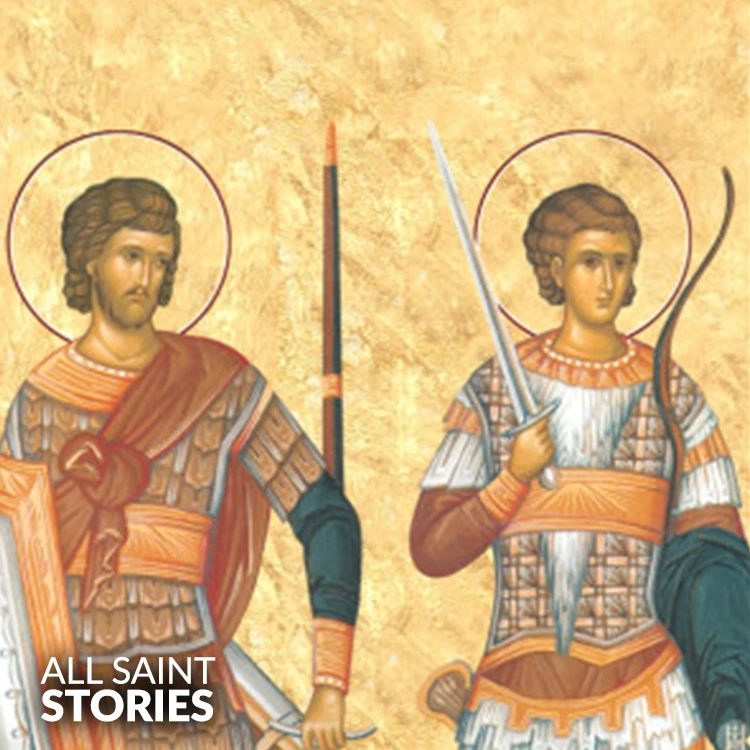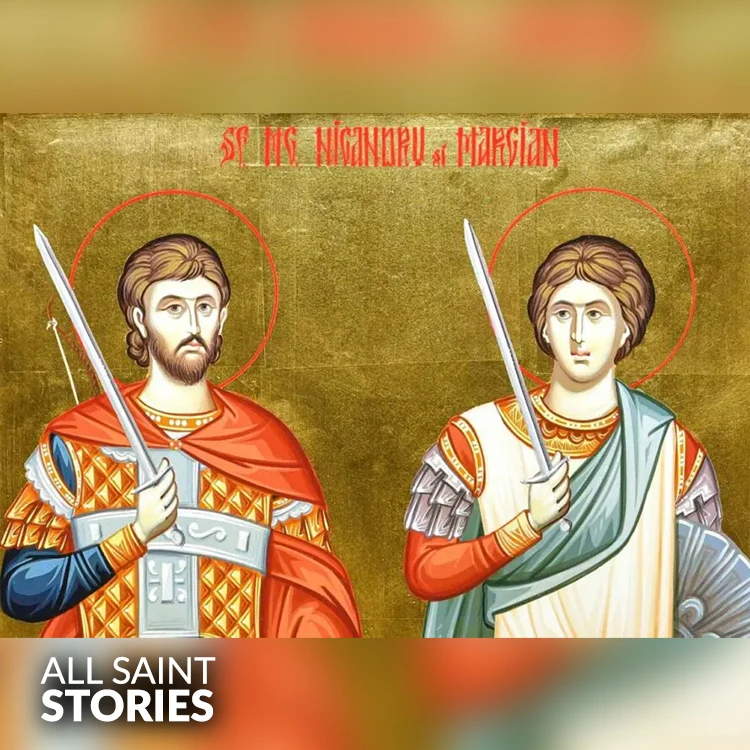"O Holy Saints Nicandru and Marcian, faithful servants of God, intercede for us before the Lord. May your courage, devotion, and love for Christ inspire us to live in faith and humility. Guide us on our path, protect us from harm, and help us to grow in holiness. Through your prayers, may we find strength in our struggles and peace in our hearts. Amen."
ST. NICANDRU AND MARCIAN
ST. NICANDRU AND MARCIAN

St. Nicandrus and St. Marcian were Christian martyrs who lived during the Roman Empire's era of intense persecution. They are believed to have been executed for their faith under Emperor Diocletian, around the early 4th century. Their stories are a testament to enduring faith and courage in the face of suffering. Their feast day is commemorated on March 31.
St. Nicandrus and St. Marcian are remembered as martyrs who lived during the time of Roman emperor Diocletian, a period notorious for its harsh persecution of Christians. Their exact birth dates and locations are not well-documented, and many of the details surrounding their lives are obscure. However, according to Christian tradition, they were both highly devout individuals who, through their faith, made an impact on their communities.
St. Nicandrus is said to have been a bishop of Myra, a city in the region of Lycia in what is modern-day Turkey. He is often depicted as a strong spiritual leader, helping guide his flock in a time of great peril for Christians. His unwavering commitment to his faith during the persecution earned him a place in the ranks of martyrs. It is believed that St. Nicandrus suffered death at the hands of Roman authorities, who were determined to suppress Christianity and force Christians to renounce their beliefs.
St. Marcian, although less well-known than St. Nicandrus, is often considered his companion in faith and martyrdom. The two saints are sometimes said to have been executed together, with St. Marcian's life reflecting the same devotion and courage as that of St. Nicandrus.
The details of their deaths are not fully fleshed out in historical sources, but their martyrdom is commemorated as an example of steadfastness in the face of oppression. They were among the many Christian martyrs who perished under Diocletian’s edicts, which sought to eradicate Christianity from the Roman Empire. Despite the lack of concrete historical evidence, the devotion of these saints remains significant to Christian communities, especially in Eastern Orthodox and Catholic traditions, where their feast day is observed on March 31.
Though the exact location of their burial is unknown, it is believed that their relics were venerated by early Christians in the region. Over the centuries, their stories were passed down, inspiring future generations of Christians to persevere in their faith no matter the challenges they faced. Their memory endures not only in liturgical observances but also in the hearts of the faithful, who look to them as examples of courage and unwavering devotion to Christ.
Video Not Found
The information on this website is compiled from various trusted sources. While we aim for accuracy, some details may be incomplete or contain discrepancies.
If you notice any errors or have additional information about this saint, please use the form on the left to share your suggestions. Your input helps us improve and maintain reliable content for everyone.
All submissions are reviewed carefully, and your personal details will remain confidential. Thank you for contributing to the accuracy and value of this resource.
Credits & Acknowledgments
- Anudina Visudhar (Malayalam) – Life of Saints for Everyday
by Msgr. Thomas Moothedan, M.A., D.D. - Saint Companions for Each Day
by A. J. M. Mausolfe & J. K. Mausolfe - US Catholic (Faith in Real Life) – Informational articles
- Wikipedia – General reference content and images
- Anastpaul.com – Saint images and reflections
- Pravachaka Sabdam (Malayalam) – Saint-related content and insights
We sincerely thank these authors and platforms for their valuable contributions. If we have unintentionally missed any attribution, please notify us, and we will make the correction promptly.
If you have any suggestion about ST. NICANDRU AND MARCIAN
Your suggestion will help improve the information about this saint. Your details will not be disclosed anywhere.
© 2025 Copyright @ www.allsaintstories.com



 English
English
 Italian
Italian
 French
French
 Spanish
Spanish
 Malayalam
Malayalam
 Russian
Russian
 Korean
Korean
 Sinhala
Sinhala
 Japanese
Japanese
 Arabic
Arabic
 Portuguese
Portuguese
 Bantu
Bantu
 Greek
Greek
 German
German
 Dutch
Dutch
 Filipino
Filipino